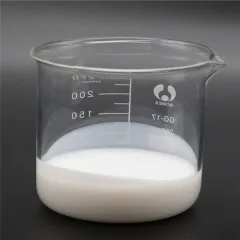Introduction to Surfactants
Surfactants, or surface-active representatives, are substances that lower the surface tension between two liquids, a gas and a fluid, or a fluid and a strong. They play a vital function in different industries, from cleansing products to drugs. Recognizing surfactants’ buildings and applications can unlock brand-new possibilities for technology and efficiency.
(Surfactants)
Types of Surfactants and Their Differences
Anionic Surfactants
Anionic surfactants carry an adverse cost on their hydrophilic end. This kind is understood for its outstanding detergency and lathering residential or commercial properties. Typical examples consist of sodium lauryl sulfate (SLS) and salt laureth sulfate (SLES), commonly utilized in shampoos and cleaning agents. Their effectiveness at removing oils and dust makes them popular in cleansing products. However, they can be annoying to the skin and eyes.
Cationic Surfactants
Cationic surfactants have a favorable fee on their hydrophilic end. They are less common in cleansing products because of their restricted capability to get rid of dust. Rather, cationic surfactants are valued for their antimicrobial residential properties and are frequently found in fabric softeners and conditioners. Instances consist of benzalkonium chloride and cetrimonium bromide.
Nonionic Surfactants
Nonionic surfactants do not have an electrical fee. They are functional and steady in both acidic and alkaline environments. These surfactants are frequently made use of in family and industrial cleaners as a result of their great solubilizing and emulsifying residential or commercial properties. Examples include alcohol ethoxylates and alkylphenol ethoxylates. They are also made use of in the food sector as emulsifiers.
Amphoteric Surfactants
Amphoteric surfactants have both favorable and unfavorable fees, making them sensitive to pH modifications. At low pH degrees, they imitate cationic surfactants, while at high pH degrees, they behave like anionic surfactants. This versatility makes them mild and effective in individual treatment products such as infant hair shampoos and face cleansers. Instances consist of cocamidopropyl betaine and lauriminodipropionate.
Applications Across Various Sectors
Surfactants locate applications in various industries because of their special properties. In the cleansing sector, they improve the removal of dirt and oils, making them essential in detergents and soaps. Individual care products gain from surfactants’ cleaning and conditioning buildings, giving customers with effective skincare remedies. The fabric market uses surfactants for dyeing and completing fabrics, making sure lively colors and soft textures. In addition, surfactants are critical in the oil and gas sector, where they enhance the recuperation of crude oil by reducing interfacial tension in between oil and water. Each industry benefits from the convenience and performance-enhancing capabilities of surfactants.
( Surfactants)
Market Patterns and Growth Drivers
The need for surfactants is raising as brand-new applications are uncovered. Advances in manufacturing processes improve quality and minimize prices. Checking makes certain materials carry out as expected, producing much better items. Business taking on these technologies use higher-quality surfactants. Customer understanding about the benefits of even more efficient and eco-friendly items drives rate of interest in those utilizing innovative surfactants. Advertising efforts concentrate on informing customers regarding the benefits of these ingenious surfactants, such as boosted efficacy and decreased environmental influence.
Difficulties and Limitations
One challenge with surfactants is their potential ecological effect. Some kinds, particularly non-biodegradable surfactants, can accumulate in communities, resulting in pollution. Another concern is expense. Premium, environmentally friendly surfactants can be costly. Nevertheless, the benefits frequently outweigh the prices. Products made with sophisticated surfactants last longer and do far better. Companies have to demonstrate the value of these surfactants to warrant the cost. Safety issues also exist, as improper handling or issues can bring about wellness threats. Study continues to make certain secure usage. Clear interaction concerning safety and security develops depend on.
Future Leads: Developments and Opportunities
The future looks promising for surfactants. Extra study will certainly locate ways to boost their performance and decrease ecological impact. Innovations such as bio-based and biodegradable surfactants intend to increase sustainability while maintaining stability and effectiveness. As industries look for greener and a lot more effective remedies, surfactants will certainly play a vital function. Their capacity to give trustworthy and flexible efficiency makes them valuable. New advancements may open additional applications. The capacity for development in numerous markets is substantial.
End of Record
This article offers an extensive yet simple exploration of surfactants, highlighting their relevance across different industries. Each section concentrates on specific elements of surfactants, ensuring quality and simplicity of comprehending while keeping deepness and professionalism.
Vendor
TRUNNANO is a supplier of Surfactants with over 12 years of experience in nano-building energy conservation and nanotechnology development. It accepts payment via Credit Card, T/T, West Union and Paypal. Trunnano will ship the goods to customers overseas through FedEx, DHL, by air, or by sea. If you want to know more about Chromium Oxide, please feel free to contact us and send an inquiry(sales5@nanotrun.com).
Tags: Surfactants, sodium lauryl sulfate, sodium dodecyl sulfate
All articles and pictures are from the Internet. If there are any copyright issues, please contact us in time to delete.
Inquiry us

